Augmenting the Travel Reality
- 8 minutes read - 1536 wordsTravel and transportation have faced and continue facing disruptions. Many of the traditional ways are no more in the choice. Earlier our parents used to warn us for taking rides with strangers, but now Uber/Ola/Lyft/Didi, etc are the preferred ways. Owning a car may be an absurd idea now. We are now dreaming of Autonomous vehicles, Flying Cars, Hyperloop, and Space travel in the near future. Do read, how the user interactions have been evolved with time in my earlier post.
Faster travel vs transportation without travel
Disruption from faster travel is not the only thing, but what if we don’t need to travel at all, instead a virtual model of us get ported at the destination and serves the purpose of travel. Possibilities of virtual model transportation are not too far, Ref: Microsoft Holoportation, Ref: Teleportation Conferences, so the travel industries will not just get disrupted by faster, convenient and eco-friendly mode of travel but also by the No-Travel or Virtual Travel mode. It will just be like what (electronic/mobile)-shopping did to the window-shopping. However, window-shopping still co-exists, and a lot of investment is being done into the user experience and solutions which makes a smoother transition across e/m/w-shopping. In this post, we will discuss some ARVR use-cases for the travel and transportation industry which may exist in the coming future as disruptors or enablers. but before that let’s take a look at the tools available in this space.
Tools for Extending the Reality:
Heads Up Display (HUD)
It extended information in front of the drivers/workers as per the context, so that they can make quick decisions and stay aware of the situations. Other vehicle sensors (GPS, Camera, Speed, IMU) helps in building the context environment. HUD is there in the industry for long, and due to its presence and it has the potential to augment more information.
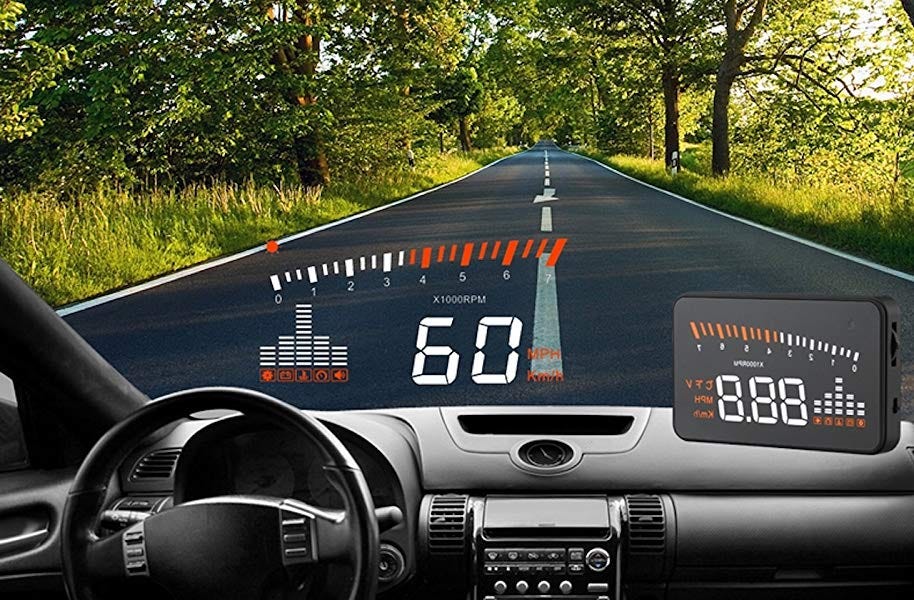 HUD — Photo Credit: Amazon.in
HUD — Photo Credit: Amazon.in
Head-Mounted Displays and Smart Glasses
Smart glasses and head-mounted displays can help the workers while their hands are busy performing the job. Smart glasses by Google Glass, Vuzix, Epson, and etc are good for displaying multimedia information right in front of the user’s eye, however, Head Mounted Devices like Microsoft Hololens, Magic Leap and Lenovo ThinkReality A6 are more capable devices and they detect and interact with the environment and provide the immersive experience to the users. Normal looking glasses are being built, and soon we have smart glasses in the normal form factor.
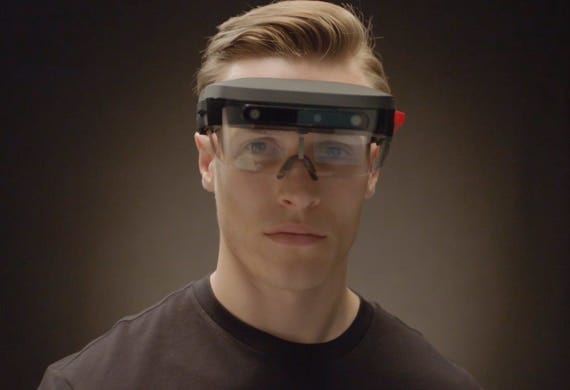 Photo Credit: https://www.lenovo.com/ww/en/solutions/thinkreality
Photo Credit: https://www.lenovo.com/ww/en/solutions/thinkreality
VR Headsets
Virtual reality headset creates a virtual environment and provides an immersive experience to the end-users in that environment. It could be a training environment, product demonstrations or a simulation of a real environment.
AR Capable Smartphone
A smartphone will still play a key role in the industry due to its omnipresence, AR applications on phones are the cheapest and easiest way to adapt the extended reality use cases. The applications built on WebXR are also well demonstratable on the phone.
Look at the more tools such as connected wearables, holographic projections in the attached slides.
Use-cases using Extended Reality Tech
Entertainment — Make Journey not Destination
Currently, most of the travel businesses are focusing on reaching a destination faster and efficient but looking at the future disruptions, the focus would shift towards making the journey interesting.
A lot of data is collected and used while a vehicle is moving from pickup to drop locations, this data can be used in making the journey interesting with
ARVR technology, sharable cloud AR anchors may be tagged with GPS and can be augmented in the environment when the user watching using the AR-enabled devices. Based on positioning anchors multiple users may also collaborate and participate in social AR networks, where user-specified AR anchors may be managed. So businesses around AR anchors storage would have great potential in the future, it can be monetized with ads etc.
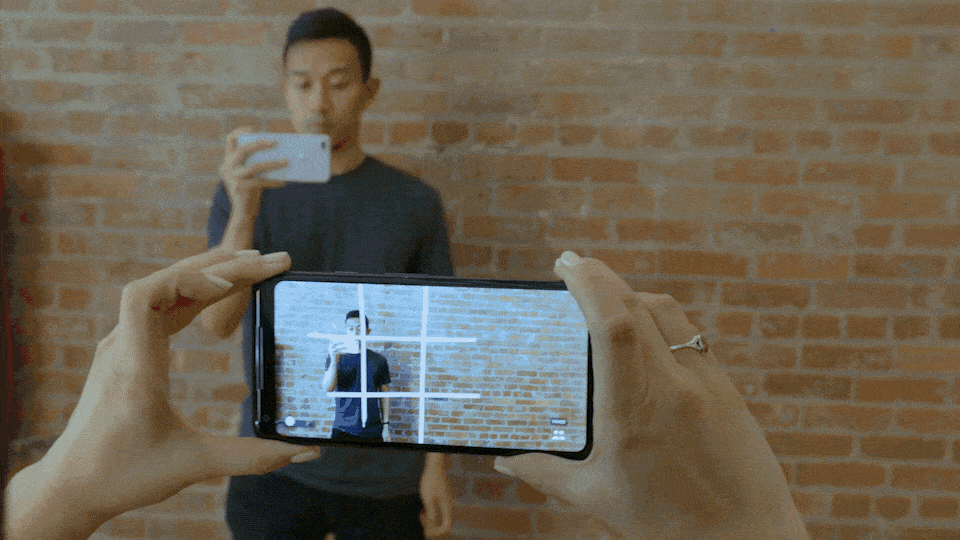 PC: https://www.vrnerds.de/google-i-o-2018-cloud-anchors-und-ar-maps/
PC: https://www.vrnerds.de/google-i-o-2018-cloud-anchors-und-ar-maps/
FM radio or Video Streaming of a favorite web series will not be the only options
The future vehicles may be seen as an embedded VR studio, where travel from your home to the airport may be experienced as a journey of a theme park, or a journey by helicopter, a journey on mars or any journey you may think of. One of the concepts is as Holoride
 PC: Holoride
PC: Holoride
Locate and Map
We are talking about self-driving cars and autonomous vehicles, which uses techniques like Simultaneous Localization and Mapping(SLAM) to build the virtual map and locate objects in the environment. A moving vehicle also generates and consumes a lot of data, which can be augmented on the environment just like ARMaps from Google, a virtual positioning system on GPS.
The ARMaps can be used for various use-cases for AR localization — Exactly locate the passenger(driver app), plan/auto adjust the routes, locate my car in AR (passenger app), etc. In the ride-sharing platform such as Uber, it is not always easy to find your car in a crowded space, it would be great if we have a feature where we can see our car highlighted in an augmented way, and also driver sees the passenger highlighted (may bigger than usual).
PC: https://www.businessinsider.in/tech
This can be extended when a passenger is given an option to experience the car, where (s)he can see the 3D model and information of the car & the driver, and even they can try the car by getting inside the car in ARVR before it comes to pick up.
More and more AR services for map and location can be built, when we integrate it with other data. Eg. find nearest charging stations, service stations, fuel stations, etc and visualize them on Visual Positioning System.
Augmented Safety Notifications
Using the ARVR tech, we may locate/augment information for signboards, directions, and the way finders, also instruct the users, drivers, and passengers about the safety on their AR-enabled devices such as HUDs on car, or smart glasses. Drivers can see red lights and traffic situations in the HUDs.
With advanced Computer Visions and AI/ML techniques, the user may be instructed about potential emergency situations ahead based on the speed, temperature, weather, location, traffic, battery status, etc.
See what Nissan unveiled — I2V (Invisible to Visible), uncovering the blind spaces and making the drive safer and smoother.
Nissan unveils Invisible-to-Visible technology concept at CES YOKOHAMA, Japan - At the upcoming CES trade show, Nissan will unveil its future vision for a vehicle that helps drivers… global.nissannews.com
Service and Maintenance
There are some great uses of ARVR in service and maintenance assistance especially when the worker’s hands are occupied and he/she needs assistance. The travel and transportation industry may also use the technology for the below use cases.
A stepwise task workflow could be implemented from task assignment to task completion, where a worker gets a task to perform in the Headset with detailed steps in form of text, audio, video, animations or augmented anchors/markers on the real-world objects. It not only guides the worker right in the working context but also may record the worker’s progress. Task completion can be plugged with proof of completion in the form of a checklist and a snapshot. It improves both efficiencies as well as the accuracy of the process.
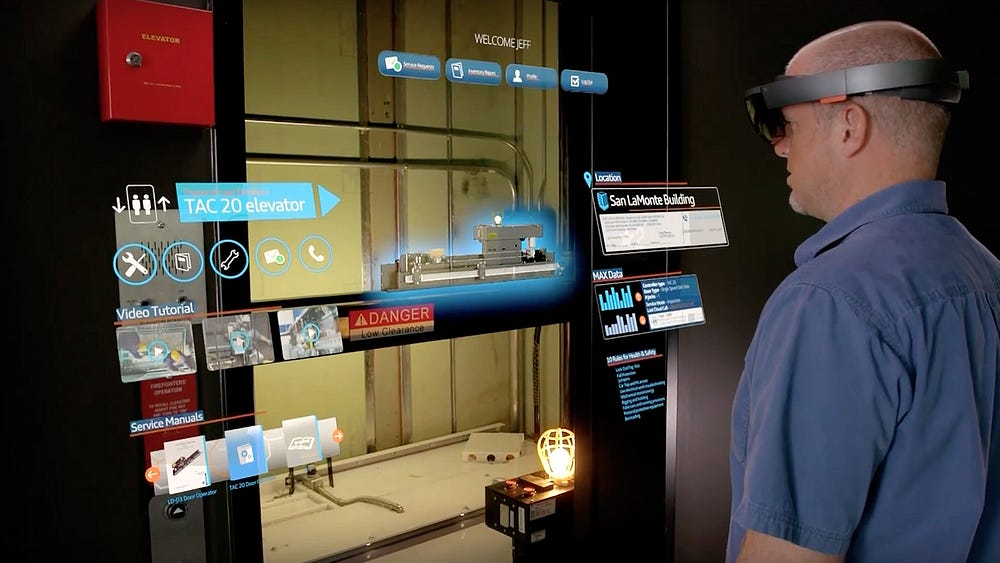 PC: https://sdtimes.com/softwaredev/the-reality-of-augmented-reality/
PC: https://sdtimes.com/softwaredev/the-reality-of-augmented-reality/
If they still need assistance, they may get remote assistance from the experts and share what they see with the expert (via front camera feed). Experts can assist the worker with voice, and also can draw/annotate on the environment of the worker.

A worker may browse detailed annotated augmented manuals right in front of their eyes by scanning the objects/codes or by talking to the devices.
Hyundai makes owner’s manuals more interesting with augmented reality Augmented reality showrooms are one thing, but Hyundai using that tech to make learning about your new car more… www.engadget.com
Augmented manuals may provide internals details of the object without getting inside, and may also guide about the possible defects and anomalies just looking at the objects.
Product demonstrations and Setup may also utilize the technology at scale. watch the Hyundai’s an AR sales tool, demonstrating the features.
Simulation-based training - Driver training to handle different driving situations in a simulated VR environment may improve safety and efficiency.
VR Control Centers
Control centers gather a lot of data from the fleet they operate, they need to visualize the data in multiple forms to get different aspects of the situations. There are multiple people with different roles interested in different types of data.
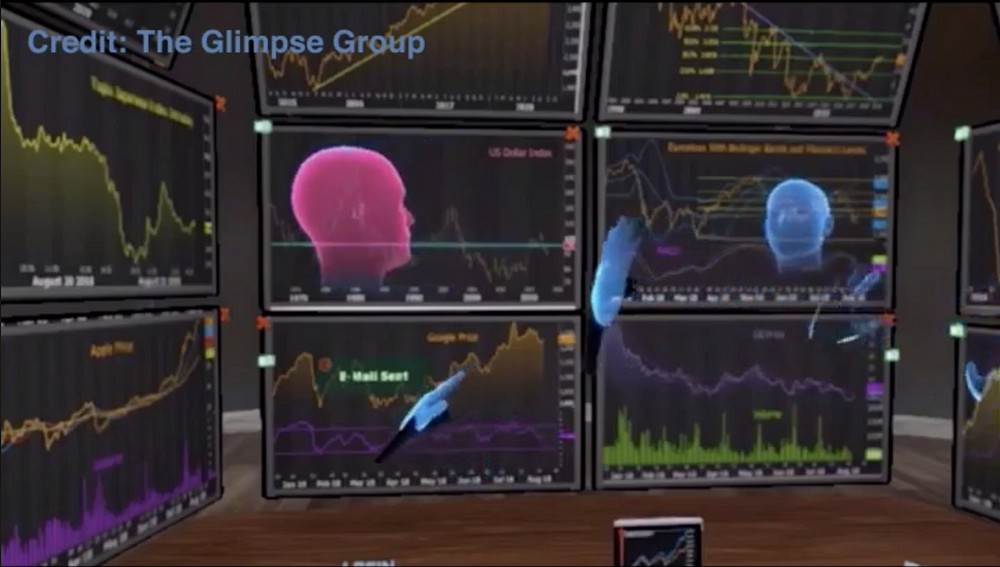
Multi-View Virtual Desktops — A VR data visualizer could be a great help to create virtual views based on the dynamic need at the control center, with the need for extra hardware. It would help is in taking decisions faster and get more clarity about the situation.
Private Desktop — Virtual visualizer also addresses privacy concerns, as the data is visible only to the user who is wearing the headset.
Conclusion
This post covers the use-cases of Extended Reality in the Travel and transportation industry. XR (AR-VR-MR) will be one of the key disruptors as well as enablers for the future businesses of the industry.
This article is originally published on XR Practices Publication
#xr #ar #vr #mr #travel #transportation #usecases #enterprise #technology